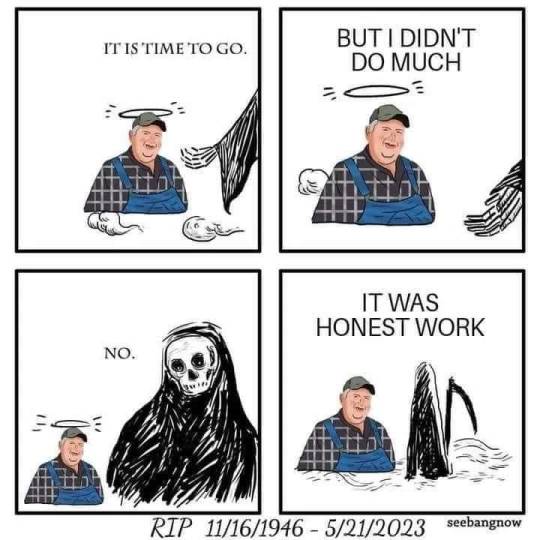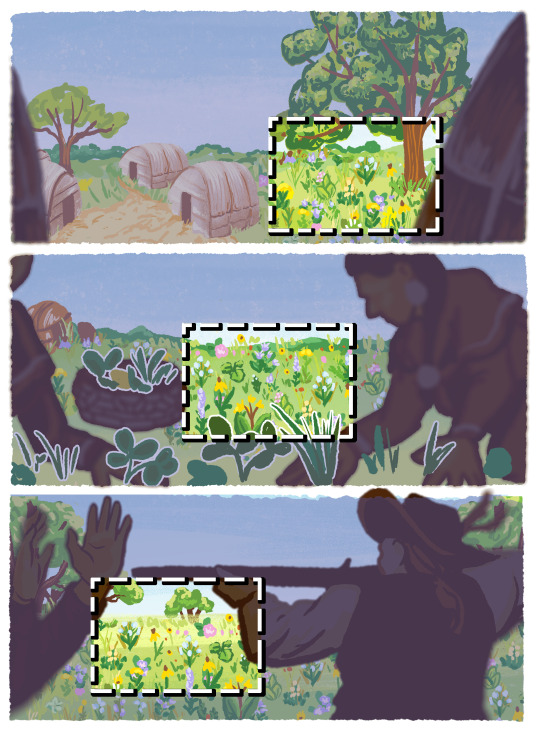But I'm collecting resources to deal with it | plants | solar punk | life skills | sustainability | ecosocialist revolution
Don't wanna be here? Send us removal request.
Text

105K notes
·
View notes
Text


Texas GOP are gerrymandering House seats to help Republicans steal the 2026 midterms.
Texas Democrats have left the state to stop the process.

5K notes
·
View notes
Text

The settler state arguably got the worst white demons in the world
17K notes
·
View notes
Text
"As climate change continues to rear its destructive, uncertain head, canine companions are playing a vital role.
There are conservation dogs sniffing out invasive species in nature preserves, helping to clean contaminated waterways, and even avalanche rescue dogs that save people in the great outdoors.
Most of these dogs are bred for greatness and train their whole puppyhood to work in these roles.
But a recent study from Virginia Tech wondered: Can everyday dogs do the same?
In the study, Virginia Tech conducted a first-of-its-kind experiment to see if citizen dog-handler teams can achieve species detection rates comparable to those of professional conservation dogs.
Over 1,000 dog owners expressed interest in the study, with more than 40% of them having prior experience in sport scent detection or other related activities.
Sport scent detection is a recreational activity in which dogs find hidden scents in training classes, and sometimes, competitions.
Ultimately, the researchers selected 182 canine-citizen teams across the U.S. to participate in their trial to see if everyday people and pets could effectively detect the “elusive” egg masses of the spotted lanternfly.
To eradicate the threat, it’s important to catch the egg masses early, but according to the study’s co-author, Mizuho Nita, “finding them is like searching for a needle in a haystack.”
With their keen sense of smell, dogs can be trained to sniff out the egg masses without disturbing the environment. Professional detection dogs do this with high accuracy, but there are not nearly enough of them to tackle the mounting concern of the invasive species, an article for the university explained.
“What if we tapped into the tens of thousands of dog owners already doing scent detection as a hobby around the country?” the researchers asked.
So, with 182 citizen scientists and their furry friends on board, researchers provided them with “devitalized” or non-hatching egg masses as a training aid. The participants trained their dogs at home or in small groups with the help of a local trainer to learn how to identify the invasive species.
“Anytime you can stimulate your dog, it’s good for them,” participant Bill Wellborn said, of his 7-year-old Tibetan terrier, Pepe.
“Pepe obviously enjoys it. And it’s a way we can take dog skills and training to help our community.”
Wellborn and Pepe — and the other participating teams — worked in sessions multiple days a week for several months, with dogs eventually tested in two environments.
In a controlled indoor environment, the dogs had to complete an odor recognition test, in which they identified the box with the spotted lanternfly egg masses from multiple boxes with other items and scents.
The dogs that passed this test then advanced to a field test outdoors, where they were required to find the same scent outside, with other competing smells.
They correctly identified the egg masses 82% of the time in the controlled tests and 61% of the time in field trials. Although the field test number dropped, it’s still a better score than human-only searches.
“These teams demonstrated that citizen scientists and their dogs can play a meaningful role in protecting agriculture and the environment from invasive species,” Sally Dickinson, the study’s lead author, said in a statement.
“With proper training, dog owners can turn their pets into powerful partners for conservation.”
For the dogs that passed both tests, 92% were successful in finding live egg masses with minimal extra training, according to the researchers.
“There are thousands of people out there doing scent work with their dogs just for fun,” Erica Feuerbacher, an animal behaviorist and a co-author on the study, said.
“What Sally’s study shows is that this can be more than a hobby — these citizen-scientists and their dogs can be a valuable resource for fighting the spread of an invasive pest.”
The dog handlers agree.
“Being able to do the same thing for the greater good — for citizen science — adds another layer we didn’t have before,” Katie Thomas, a participant, shared about her pit bull mix, Finch.
And now, with a proven concept, the future is bright for dog owners who want to bond with their pets and do a little more good.
“This research is about more than detection,” Dickinson concluded. “It’s about empowering people to work alongside their dogs to protect the places and communities they care about.”
youtube
-Article via GoodGoodGood, July 18, 2025. Video via Virginia Tech, July 16, 2025.
2K notes
·
View notes
Text
okay so I finished Incidents in the Life of a Slave Girl (1861) by Harriet Jacobs, and here are my takeaways, because it was AMAZING and I can't believe all US students aren't required to read it in school:
shows how slavery actually worked in nuanced ways i'd never thought much about
example: Jacobs's grandmother would work making goods like crackers and preserves after she was done with her work day (so imagine boiling jars at like 3 a.m.) so that she could sell them in the local market
through this her grandmother actually earned enough money, over many years, to buy herself and earn her freedom
BUT her "mistress" needed to borrow money from her. :)))) Yeah. Seriously. And never paid her back, and there was obviously no legal recourse for your "owner" stealing your life's savings, so all those years of laboring to buy her freedom were just ****ing wasted. like.
But also! Her grandmother met a lot of white women by selling them her homemade goods, and she cultivated so much good will in the community that she was able to essentially peer pressure the family that "owned" her into freeing her when she was elderly (because otherwise her so-called owners' white neighbors would have judged them for being total assholes, which they were)
She was free and lived in her own home, but she had to watch her children and grandchildren and great-grandchildren all continue to be enslaved. She tried to buy her family but their "owners" wouldn't allow it.
Enslaved people celebrated Christmas. they feasted, and men went around caroling as a way to ask white people in the community for money.
But Christmas made enslaved people incredibly anxious because New Years was a common time for them to be sold, so mothers giving their children homemade dolls on Christmas might, in just a few days' time, be separated from their children forever
over and over again, families were deliberately ripped apart in just the one community that Harriet Jacobs lived in. so many parents kept from their children. just insane to think of that happening everywhere across the slave states for almost 200 years
Harriet Jacobs was kept from marrying a free Black man she loved because her "owner" wouldn't let her
Jacobs also shows numerous ways slavery made white people powerless
for example: a white politician had some kind of relationship with her outside of marriage, obviously very questionably consensual (she didn't hate him but couldn't have safely said no), and she had 2 children by him--but he wasn't her "master," so her "master" was allowed to legally "own" his children, even though he was an influential and wealthy man and tried for years to buy his children's freedom
she also gives examples of white men raping Black women and, when the Black women gave birth to children who resembled their "masters," the wives of those "masters" would be devastated--like, their husbands were (from their POV) cheating on them, committing violent sexual acts in their own house, and the wives couldn't do anything about it (except take out their anger on the enslaved women who were already rape victims)
just to emphasize: rape was LEGALLY INCENTIVIZED BY US LAW LESS THAN 200 YEARS AGO. It was a legal decision that made children slaves like their mothers were, meaning that a slaveowner who was a serial rapist would "own" more "property" and be better off financially than a man who would not commit rape.
also so many examples of white people promising to free the enslaved but then dying too soon, or marrying a spouse who wouldn't allow it, or going bankrupt and deciding to sell the enslaved person as a last resort instead
A lot of white people who seemed to feel that they would make morally better decisions if not for the fact that they were suffering financially and needed the enslaved to give them some kind of net worth; reminds me of people who buy Shein and other slave-made products because they just "can"t" afford fairly traded stuff
but also there were white people who helped Harriet Jacobs, including a ship captain whose brother was a slavetrader, but he himself felt slavery was wrong, so he agreed to sail Harriet to a free state; later, her white employer did everything she could to help Harriet when Harriet was being hunted by her "owner"
^so clearly the excuse that "people were just racist back then" doesn't hold any water; there were plenty of folks who found it just as insane and wrongminded as we do now
Harriet Jacobs making it to the "free" north and being surprised that she wasn't legally entitled to sit first-class on the train. Again: segregation wasn't this natural thing that seemed normal to people in the 1800s. it was weird and fucked up and it felt weird and fucked up!
Also how valued literacy skills were for the enslaved! Just one example: Harriet Jacobs at one point needed to trick the "slaveowner" who was hunting her into thinking she was in New York, and she used an NYC newspaper to research the names of streets and avenues so that she could send him a letter from a fake New York address
I don't wanna give away the book, because even though it's an autobiography, it has a strangely thrilling plot. But these were some of the points that made a big impression on me.
Incidents in the Life of a Slave Girl also inspired the first novel written by a Black American woman, Frances Harper, who penned Iola Leroy. And Iola Leroy, in turn, helped inspire books by writers like Nella Larsen and Zora Neale Hurston. Harriet Jacob is also credited in Colson Whitehead's acknowledgments page for informing the plot of The Underground Railroad. so this book is a pivotal work in the US literary canon and, again, it's weird that we don't all read it as a matter of course.
(also P.S. it's free on project gutenberg and i personally read it [also free] on the app Serial Reader)
34K notes
·
View notes
Text
This is not like a fully completed thought but yk
So I've done my first aid + CPR a few times. And every single time I try and bring up scenarios for fat folks
Specifically like 'what if someone is too large for me to wrap my arms around then to do the heimleich'
And its incredibly rare I get a decent answer.
How absolutely insane is it that me, as a fat person, is asking how to have MY life saved or to save ANOTHER life, is an impossible feat if someone is fat.
Most of the time they tell me to 'just try anyways uwu'
There has got to be a better option.
78K notes
·
View notes
Text


Oh my god
20K notes
·
View notes
Text
Maintaining the biodiversity of sheep is not just important for knitters and spinners, but for the health of the environment. Essentially, a sheep functions like a carbon sequestration system. Atmospheric carbon makes up 50 percent of wool's weight, and, unlike synthetic fabrics, wool is naturally biodegradable. When disposed of, wool acts like a fertilizer, slowly releasing valuable nutrients and carbon back into the soil. Wool fixed carbon in the topsoil rather than releasing it into the atmosphere. This process can help regenerate pastures, which sheep will graze. And sheep can help answer the problem of how to avoid far-flung fiber supply chains. Because sheep do well in such an extraordinary range of terrains, wool is a natural choice for people interested in rebuilding local systems of cloth manufacture. Certain breeds are more suited to certain atmospheric and geologic conditions than others, so preserving diversity also means preserving the geographic range in which sheep can flourish.
Sofi Thanhauser, Worn: A People’s History of Clothing
4K notes
·
View notes
Text
So a white woman today wished me happy canada day, and when I did not respond positively, told me that while she's not much for canada day, she was thankful for her freedoms as a queer/trans person.
I told her "glad you all get freedoms at least"
And it really is 'you all' and not us.
My people's traditional systems of gender and social roles are not recognized. There's no legal recognition for people who are ayahkwêw, iskwêhikan, or înapîkasoht. No understanding of the roles of tastawiyiniwak.
Our traditional styles of relationships, the way that we do "marriage" has no legal protection. Legal marriage takes after european christian marriage. Why are Indigenous unions considered less valid? Why does the occupational government get a say in who I choose to share my life with?
Polyamory was not uncommon among my people. People regularly had multiple partners. You could have multiple spouses. These relationships nowadays have no recognition, no protection.
Children were raised communally. Nowadays most kids are raised without our language. More than 70% of kids in care in Alberta (where I live) are Indigenous. Instead of being raised by the community our kids get stolen off reserve and sent to white families.
People had the right to end relationships at any time. How many women get stuck in abusive marriages because of the high financial cost of divorce? How many Indigenous wives have been murdered by settler husbands before they could leave???
50% of sex trafficking victims in so called canada are Indigenous women and girls. Rates of rape and sexual violence are higher against our women and two spirit people than anyone else. We are just now starting to talk about how many Indigenous girls went from residential school to arranged marriages with white men.
But its great that settlers can have their queer marriages recognized. Happy canada day.
8K notes
·
View notes
Text

thinking about what is and what isn't allowed in frame with reference ecosystems in prairie restoration
73K notes
·
View notes
Text
spam emails are horrifying on an entirely different level once you actually begin to grapple with the material reality of ‘cyberspace’. how many servers were involved in dumping this message into my trash folder, where are they located, how much water goes into cooling them every day? where did the metals come from to build these facilities, who maintains them, how much labour and suffering and exploitation is required to bombard me with 50 messages a day i don’t even look at for products i will never buy? not just useless or a nuisance, but actively harming the earth & its people, and for what. zero social value, zero human communication, just capital trying to metastasise
47K notes
·
View notes
Text
Happy Stitch Day, everyone donate to the NICWA out of apology that we let the reboot gain any kind of traction


The National Indian Child Welfare Association is an organization working to protect indigenous children and families through education and advocacy on child welfare and kinship rights. Nobody gets left behind.
16K notes
·
View notes
Video
translation: “My sheep! [bah! bah!] You are my life. [bah! bah!] Walk behind me…[bah! bah!] Sing (after me).”
274K notes
·
View notes




